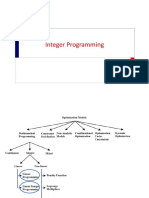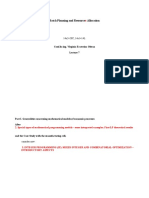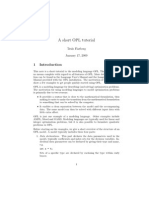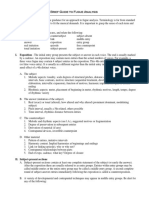0% found this document useful (0 votes)
128 views15 pagesIE 322 Lab 3 Compact Form Using Data
The document describes modeling a linear programming problem in CPLEX to optimize student course selections given preferences and capacity constraints. It includes:
1. Defining the parameters of the problem - number of students/courses, preference scores, course capacities.
2. Defining decision variables as binary variables indicating if a student takes a course.
3. Defining the objective function to maximize total preference score based on course selections.
4. Defining constraints - each student selects the required number of courses, number of students in each course is below capacity.
Uploaded by
Ony OussCopyright
© © All Rights Reserved
We take content rights seriously. If you suspect this is your content, claim it here.
Available Formats
Download as PDF, TXT or read online on Scribd
0% found this document useful (0 votes)
128 views15 pagesIE 322 Lab 3 Compact Form Using Data
The document describes modeling a linear programming problem in CPLEX to optimize student course selections given preferences and capacity constraints. It includes:
1. Defining the parameters of the problem - number of students/courses, preference scores, course capacities.
2. Defining decision variables as binary variables indicating if a student takes a course.
3. Defining the objective function to maximize total preference score based on course selections.
4. Defining constraints - each student selects the required number of courses, number of students in each course is below capacity.
Uploaded by
Ony OussCopyright
© © All Rights Reserved
We take content rights seriously. If you suspect this is your content, claim it here.
Available Formats
Download as PDF, TXT or read online on Scribd
/ 15























































































